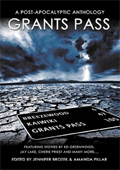PREDICTIONS OF THE END OF POSSE COMITATUS NOW A REALITY, SAY EXPERTS
By
NWV News Writer Jim Kouri
Posted 1:00 AM Eastern
March 24, 2013
© 2013 NewsWithViews.com
During a senate hearing, titled, “The Future of Drones in America: Law Enforcement and Privacy Considerations,” held on Wednesday, legal experts told lawmakers on the Senate Judiciary Committee that within the next ten years thousands of unmanned aerial vehicles, commonly known as drones, will be used to gather information from civilians by law enforcement and intelligence agencies.
Legal experts who testified, including Amie Stepanovich, director of the Domestic Surveillance Project, Electronic Privacy Information Center, claimed that new privacy laws are required to protect Americans from public and private use of UAVs.
Drone construction and implementation is considered a "growth industry" in the U.S. with research continuing on production of a "stealth drone." Unmanned aerial vehicles will be programmed to monitor crops, national parks, animal preserves and to assist police SWAT teams. As a result, federal and state privacy laws have been rendered anachronistic by advances in drone technology, experts said at the Senate hearing.
The testifying expert said:
"Current privacy protections from aerial surveillance are based on court decisions from the 1980s, the Judiciary Committee was told, before the widespread drone use was anticipated. In general, manned helicopters and planes already have the potential to do the same kinds of surveillance and intrusive information gathering as drones, but drones can be flown more cheaply, for longer periods of time and at less risk to human life. That makes it likely that surveillance and information-gathering will become much more widespread."
Meanwhile, Federal Aviation Administration officials claimed that upwards of 7,000 civilian drones will be in use within the next five years once the FAA grants them greater access to U.S. skies.
Congress had directed the FAA to provide drones with widespread access to domestic airspace by 2015, but the agency is behind in its development of safety regulations and isn't expected to meet that deadline even though the FAA has granted more than two hundred permits to state and local governments, police departments, universities and others to experiment with using small drones.
The majority of police and civilian drones will be much smaller than those used by the military. The U.S. military uses everything from unarmed, hand-launched drones to UAS's (unmanned aerial systems) that can fire Hellfire missiles and guided bombs.
As a result of sequestration -- across-the-board budget cuts to the military, intelligence agencies and law enforcement departments -- Unmanned Aerial Systems may become more and more useful in maintaining a certain degree of security, according to former police commander Charles Nettinger, now a security consultant.
"Two or three unmanned aerial vehicles will be able to monitor entire cities even during the darkest nights. If need be, weapons systems could be mounted on them, but that isn't a desirable outcome," Nettinger said.
The Federal Aviation Administration authorizes UAS use on a case-by-case basis after conducting a safety review. FAA and the other federal agencies that have a role or interest in UAS are working to provide routine access for UAS into the national airspace system, according to a GAO report.
Obama blurs line between law enforcement and military
While some law enforcement commanders and officers welcome federal assistance during emergencies, others are less enthusiastic about having military personnel involved in operations within their jurisdictions. They believe President Barack Obama and others in government wish to blur the line between policing and warfighting, several experts said following a congressional hearing on Wednesday, March 20.
U.S. Northern Command claims it is working with its partners to improve its ability to support civil authorities during disaster responses, and is now better postured to do so through a new construct that improves coordination among the forces involved, the Northcom commander told Congress during Wednesday's hearing.
Pointing to the command’s role when Hurricane Sandy dealt a devastating blow to the Atlantic coast in October, Army Gen. Charles H. Jacoby told the House Armed Services Committee that NORTHCOM gained valuable insights and experience that will pay off in the future, according to Donna Mills of the American Forces Press Service.
In a report released to the US Congress recently, analysts assessed what they termed "preparedness tests" between the US military and government agencies at the federal, state and local levels.
U.S. Northern Command (NORTHCOM) exercises to test preparedness to perform its homeland defense and civil support missions. The Government Accountability Office was asked to assess the extent to which NORTHCOM is consistent with Department of Defense guidelines for training and exercise requirement involving interagency partners and states in its exercises.
NORTHCOM’s exercise program is generally consistent with the requirements of DOD’s Joint Training System, but its exercise reporting is inconsistent. Since the command was established in 2002, NORTHCOM has conducted 13 large-scale exercises and generally completed exercise summary reports within the required time frame.
However, those reports did not consistently include certain information, such as areas needing improvement, because NORTHCOM lacks guidance that specifies exercise reports’ content and format, potentially impacting its ability to meet internal standards for planning and execution of joint exercises, and to compare and share exercise results over time with interagency partners and states.
"While the rationale for using the US military domestically had been debated for years, President Barack Obama appears intent on using our military at least until he can create his promised 'Civilian Security Force' which he said would be as big and powerful as the military," said political strategist Mike Baker.
"The fact that the military -- in this instance NORTHCOM -- is being trained to operate with our borders should be setting off alarms throughout this nation. But it's being ignored even by those who profess to be conservatives," he said.
Nineteen federal agencies and organizations and 17 states and the District of Columbia have participated in one or more of the seven large-scale exercises that NORTHCOM has conducted since September 2005. However, NORTHCOM faces challenges in involving states in the planning, conduct, and assessment of its exercises, such as adapting its exercise system and practices to involve other federal, state, local, and tribal agencies that do not have the same practices or level of planning resources.
Pointing to the command’s role when Hurricane Sandy dealt a devastating blow to the Atlantic coast in October, Army Gen. Charles H. Jacoby told the House Armed Services Committee that Northcom gained valuable insights and experience that will pay off in the future.
“Hurricane Sandy offered us a glimpse of what a complex catastrophe which spanned several states and regions could look like,” he told the panel. The challenge now, he said, is to build on lessons learned to improve the processes Northcom provides the Federal Emergency Management Agency or other designated lead federal agencies.
| Subscribe to the NewsWithViews Daily News Alerts! |
Inconsistencies with how NORTHCOM involves states in exercises are occurring in part because NORTHCOM officials lack experience dealing with states and do not have a consistent process for including states in exercises. Without such a process, NORTHCOM increases the risk that its exercises will not provide benefits for all participants, impact the seamless exercise of all levels of government, and potentially affect NORTHCOM’s ability to provide civil support capabilities.
"It is up to the residents of individual states to tell their governors they do not want the federal government intruding on law enforcement and public safety issues," said former NYPD detective and Marine intelligence officer Sid Frances.
"This is especially true if their governors share the same political philosophy as the President and his minions in Washington," he added.
© 2013 NWV - All Rights Reserved











 Share
This Article
Share
This Article





